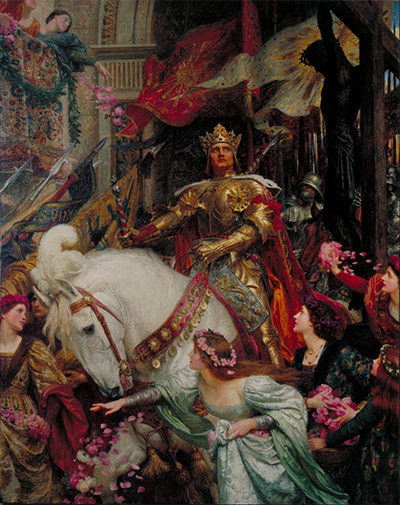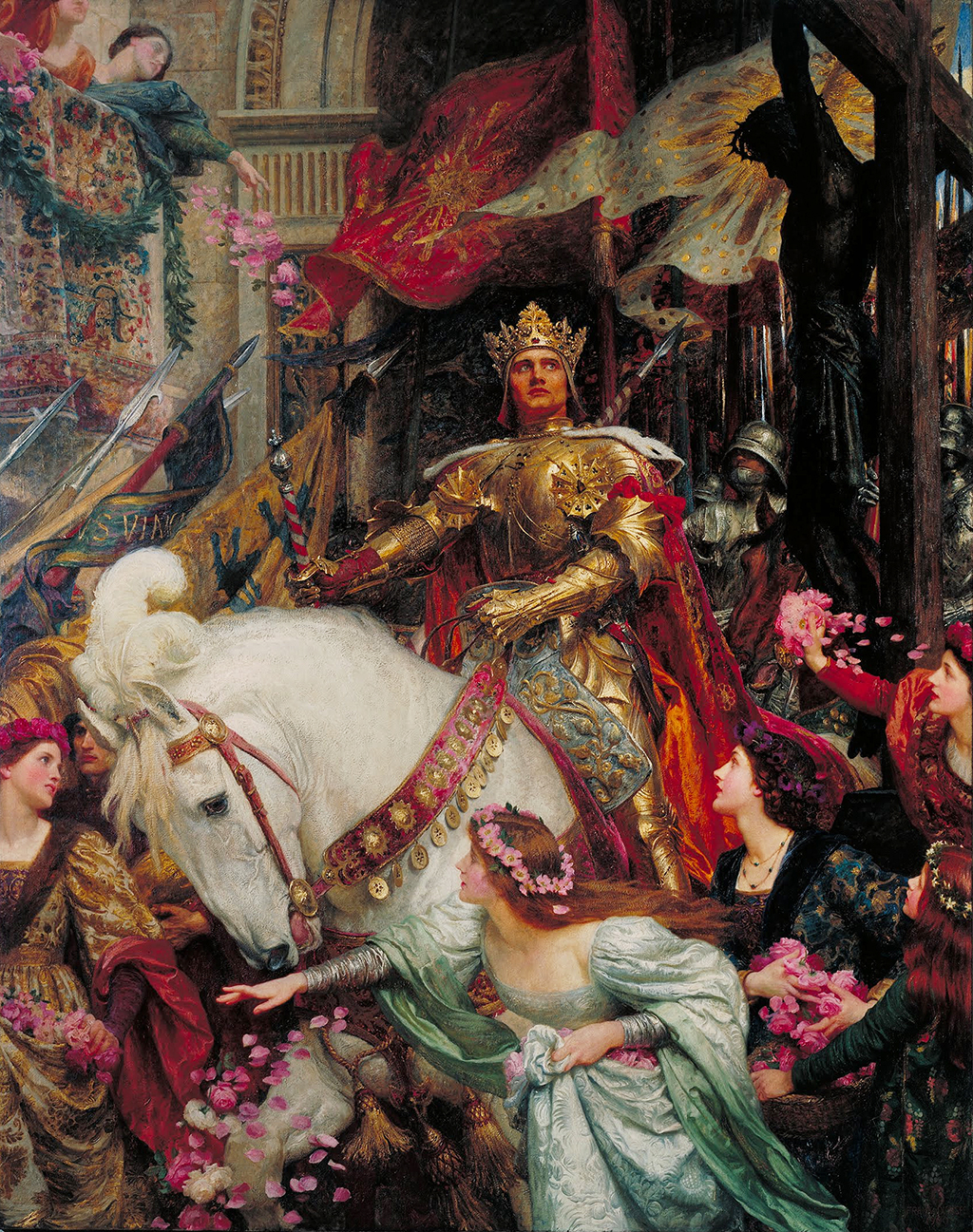The Two Crowns is considered by many to have been the most famous painting from the career of Frank Dicksee, as well as the most beautiful. The detail in this piece is extraordinary and it can now be found at the Tate in the UK.
This artist was highly unusual in that he depicted historic scenes within his paintings, but they were not actually inspired by specific events, more inspired by the past. That immediately placed him at odds with the Pre-Raphaelite Brotherhood who preferred to recreate scenes directly from specific mythological tales or more recent domestic poetry. Some of the finest examples of that include Waterhouse's Lady of Shalott and Hylas and the Nymphs. That said, Dicksee's imagination was extraordinary and the scene that we find in front of us here feels entirely real. He also goes into incredible detail right across the composition, with every last detail of each figure's attire being carefully and thoughtfully delivered. Perhaps the artist enjoyed the freedom of working from his own imagination, where specific elements of a mythological tale would all have to be featured by an artist, or they would come under criticism.
Dicksee completed The Two Crowns in 1900, at which point he would have been in his late forties and approaching his peak as an artist. Most of his prestigious awards would occur very late on, though his election to the Academy was nine years earlier in 1891. Dicksee would become its President in as late as 1924. He was knighted a year later. The Tate, a British art institution who own this painting, were gifted this artwork upon its completion in the same year of 1900, by the Trustees of the Chantrey Bequest (they originally purchased it directly from the artist himself for £2,000). They continue to hold one of the finest collections in the art world and most of it was actually given to them through the bequething of various British collectors over the past few centuries. Other attempts have also been made in recent years to prevent privately owned artworks being sold abroad, and these would then be passed on to institutions such as this in order that the British public can appreciate them first hand.
The title refers to how the medieval king is reminded of his position relative to the power of God, with his eyes firmly focused on some sort of vision of Christ. Whilst around him in the painting he enjoys absolute power and love, there are other higher beings to consider. The Two Crowns, the title of this piece, refers to the crown of the king that we see in front of us, as well as the thorned crown as was worn by Christ whilst on the cross. This scene, entirely imagined by the artist, is therefore a merging of medieval culture with religious teachings, that were particularly closely followed in British society at that time. Focusing intially on the devotion given to him in the painting, there are flower petals thrown into the air, some from above and some from below. Pale skinned young women stare at the king in excitement and with great love for their ruler. There is certainly a romantic element to this passion and power found in this composition.
This piece is normally to be found on display at the Tate Britain, as the institution hosts a number of different galleries and spreads their large collection around them. They also own Dicksee's Harmony, for example, as well as a number of Pre-Raphaelite paintings which display clear stylistic similarities. Frederick Sandys, Sir John Everett Millais, William Holman Hunt and Dante Gabriel Rossetti can all be featured here, for example, with some of the specific highlights being the likes of Proserpine, Beata Beatrix, The Awakening Conscience and Ophelia. Anything from around the early 20th century onwards would then make it into the Tate Modern instead, although there can sometimes be a crossover between the two galleries. In recent years the Tate has added extra venues outside of London in order to ensure that their collection is better displayed to the country as a whole, rather than just those living or visiting the capital.





